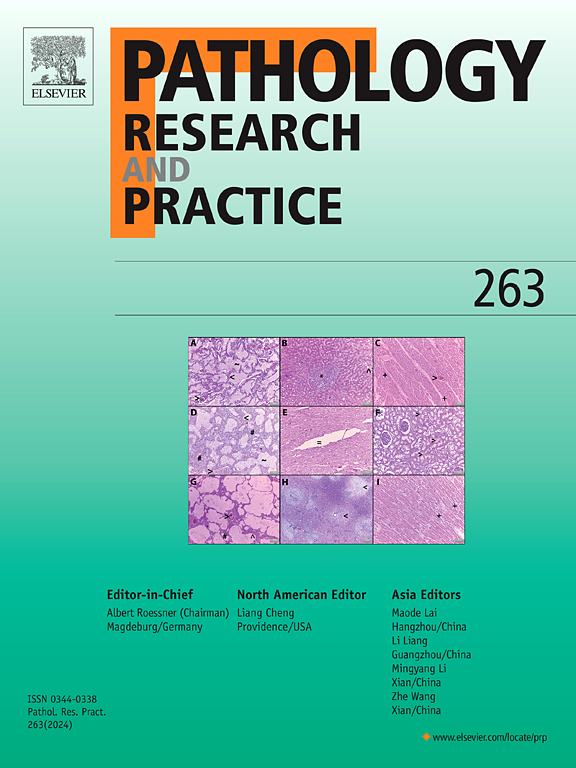Crystal-storing histiocytosis of multiple myeloma with a novel multi-exon deletion of WRN: A case report and mini review of literature
IF 2.9
4区 医学
Q2 PATHOLOGY
引用次数: 0
Abstract
Crystal-storing histiocytosis (CSH) is a rare condition composed of nonneoplastic histiocytes, which showed the abnormal intra-lysosomal accumulation of immunoglobulin (Ig) as crystals. At the same time, CSH is often associated with lymphoplasmacytic neoplasms. Previous research suggested that crystal deposition was caused by a change in protein activity. However, the reasons for Ig structural alterations are unknown. Only 8 examples of skin lesions associated with a human condition called CSH in the skin have been documented. Now we described a skin condition in the patient caused by CSH. More specifically, we first demonstrated a novel multi-exon deletion of WRN, including exon10-intron13, in this patient. Chr8:g.30941261_30947513del was displayed. It is a novel gross deletion mutation of WRN. WRN protein is a member of the RecQ subfamily of DNA helicase proteins. It is crucial for maintaining the stability of the genome and participating in DNA metabolism. 83 different WRN mutations, the majority of which were point mutations, were identified in earlier research. It is the first report of the novel WRN mutation in our patient. WRN loss of function due to point mutations may result in Werner syndrome, an autosomal recessive disorder. There was no evidence of Werner syndrome in our patient. Our case is a rare CSH in the skin associated with multiple myeloma. Diagnosis of this disorder is challenging. The somatic mutation of WRN was found in the histiocytic lesions of our patient’s skin. It would suggest that the WRN gene might be one of the reasons for the accumulation of crystals in the histiocytes. There may be a potential connection between WRN mutation and CSH pathogenesis. It would help us to comprehend why some patients with lymphoplasmacytic neoplasm have CSH.
求助全文
约1分钟内获得全文
求助全文
来源期刊
CiteScore
5.00
自引率
3.60%
发文量
405
审稿时长
24 days
期刊介绍:
Pathology, Research and Practice provides accessible coverage of the most recent developments across the entire field of pathology: Reviews focus on recent progress in pathology, while Comments look at interesting current problems and at hypotheses for future developments in pathology. Original Papers present novel findings on all aspects of general, anatomic and molecular pathology. Rapid Communications inform readers on preliminary findings that may be relevant for further studies and need to be communicated quickly. Teaching Cases look at new aspects or special diagnostic problems of diseases and at case reports relevant for the pathologist''s practice.

 求助内容:
求助内容: 应助结果提醒方式:
应助结果提醒方式:


